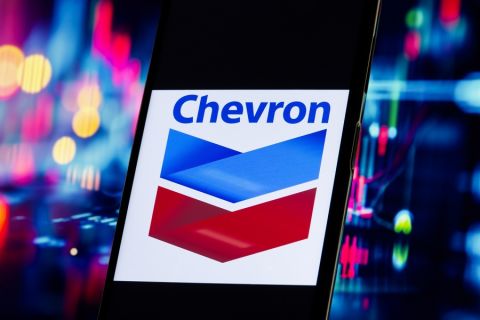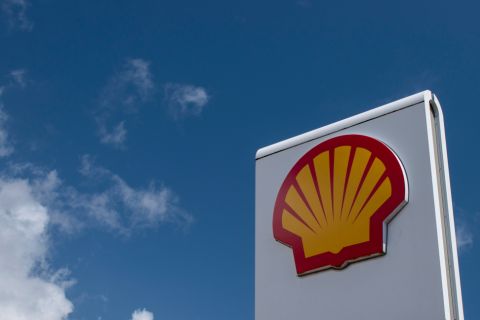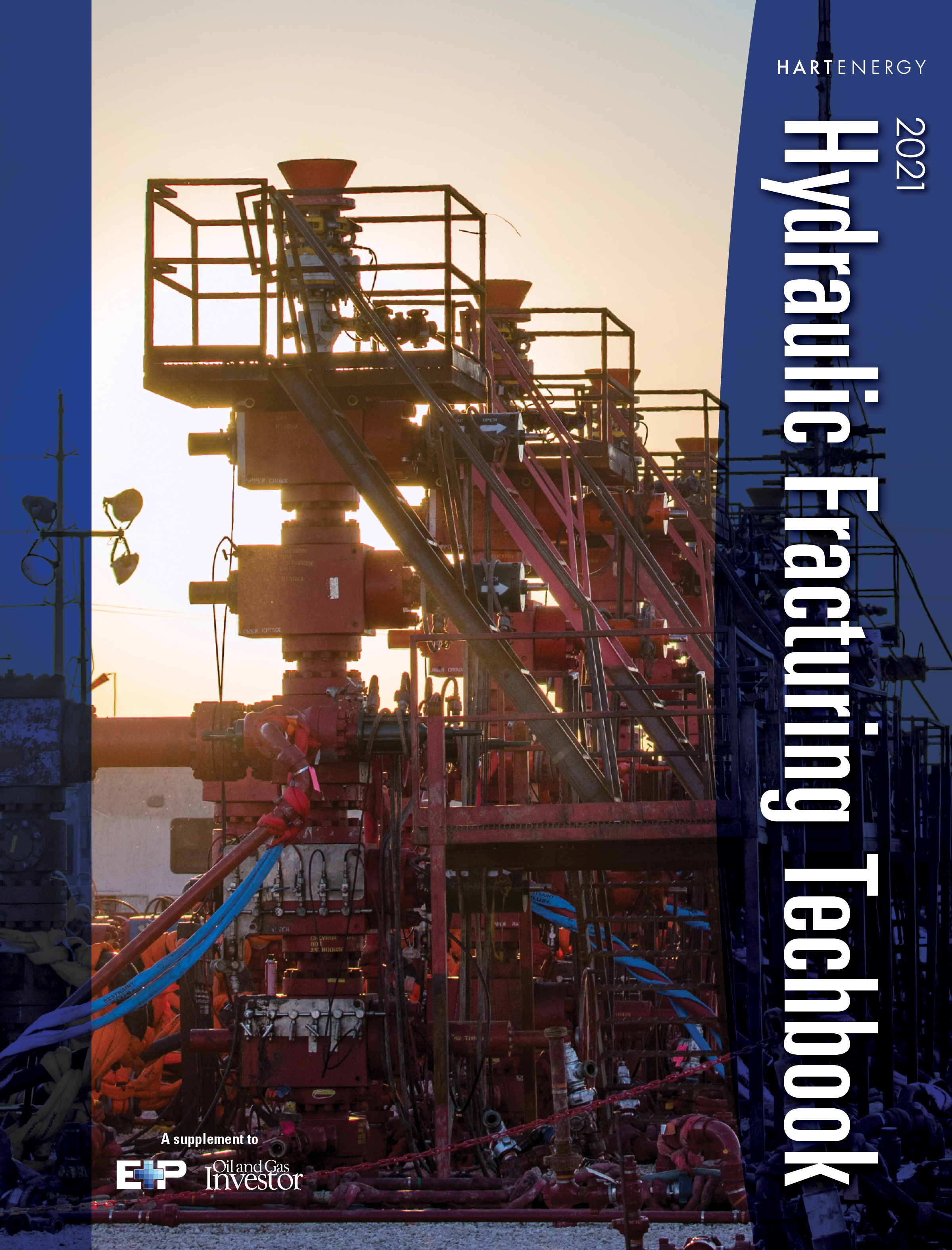
Editor's note: This article first appeared in the 2021 Hydraulic Fracturing Techbook. View the full PDF of this techbook here.
Despite oil market ups and downs, one target is a constant on the radar for U.S. pressure pumpers—improved efficiency.
Still recuperating from one of the worst years in the oil industry’s history, activity has picked up across major shale plays, and oilfield service (OFS) companies are concentrating efforts on what they can control, not knowing what curveballs an unexpected merger of two E&P players, investor mandates or new market entrant could bring their way.
Many are powering through by focusing on next-generation technologies, increasing the efficiency of operations and completing more wells with less horsepower with sights on lowering emissions. Trends such as simultaneous hydraulic fracturing (simul-frac)—a process in which two horizontal shale wells are stimulated at the same time with one pressure pumping fleet to cut time and save money—are gaining traction. Pressure pumpers are also helping fulfill sustainability needs with equipment that runs on natural gas or powered via the grid.
Hopes are that economics will continue to improve, following a dismal 2020 rocked by a global pandemic that dried up demand, extreme oil price volatility and the short-lived OPEC+ collapse that pushed WTI deep into negative territory.
For insights on how the pressure pumping sector is faring, these experts shared their thoughts with Hart Energy:
- Scott Toler, vice president of pressure pumping and cementing group, NOV
- Michael Segura, vice president of production enhancement, Halliburton
- Shawn Stasiuk, strategic business manager of production enhancement, Halliburton
- Eric Holley, senior product manager, Halliburton
- Nebojsa Knezevik, cementing bulk plant manager, Halliburton
- Sam Sledge, president, ProPetro
- David Schorlemer, CFO, ProPetro
- Shelby Fietz, vice president of business development, sales and marketing, ProPetro
Hart Energy: How would you characterize the state of the pressure pumping sector today, and how do you see this evolving over the next six to 12 months?
NOV: Recovering—for myriad reasons, 2020 was simply a year of survival for most OFS companies and those OEMs [original equipment manufacturers] that support the industry. While I would not classify 2021 as a rebound year, it is certainly showing signs of improvement as more fleets get back to pumping. But activity alone does not make a healthy market. We still need to see an improvement in pricing, which we won’t see until there is a closer balance between supply and demand on the service side. Consolidation has played and will continue to play a part in accelerating the rate of recovery, but new entrants to the market—which we are hearing news of—could unfold that goodwill quickly.
ProPetro: Pressure pumping activity is up, but current economics are still unsustainable. For companies like ours to continue to invest in our people and our equipment, we need activity to remain steady to give us an opportunity to work with our customers to improve economics and enable reinvestment.
Halliburton: Efficiency is still the name of the game, and as an industry we remain focused on finding smarter, more efficient ways to increase pumping hours per day while extending maintenance intervals. Electric fracturing [e-frac], which offers lower emissions and diesel consumption as well as increased pump performance, continues to gain market penetration. However, as the industry strives to achieve that next level of efficiency and performance in surface and subsurface execution, we are beginning to see an emergence in automation being applied for process control and completion optimization.
Hart Energy: What is the forecast for frac spreads for 2021 and 2022, given operators’ focus on shareholder returns instead of volume growth? Which basins do you anticipate activity increasing or decreasing?
NOV: My crystal ball says ‘insert number here.’ The reality is there is so much at play that it is really difficult to predict where the market will go with any certainty. All indications are that global economics and pandemic recovery will continue to push oil demand in the right direction, and global politics should support a continued recovery in North America. However, as compared to previous downturns, the momentum of this current recovery cycle has been subdued by the investor community’s desire to see oil and gas companies post positive cash flow as opposed to positive production growth. After a dreadful 2020, I know the oil and gas food chain is anxious to get busy again, but I think the slower recovery will ultimately be beneficial to the industry with the potential for flattening out the up-and-down cycles of the past 15 years. Of course, private E&Ps are still a wildcard as ESG and returns are not necessarily big drivers.
ProPetro: We are currently only focused on the Permian and expect activity to remain flat the rest of the year with an opportunity to step up slightly going into 2022, assuming frac economics improve. We are only expecting Permian production to grow in the low single digits compared to 2019, if at all.
Halliburton: As an industry, we have adjusted to the new norm, and we are exercising capital discipline and watching cash flow. With a focus on generating returns for shareholders and new efficiency gains being realized with simul-frac operations, we see a potential for a moderate spread count increase of between 210 and 250 in 2022. As far as basins, I think we will continue to see Texas plays dominate the market with continued focus in the Permian and renewed focus on the Haynesville.
Hart Energy: Do you see more consolidation among pressure pumpers in the sector’s immediate future? What does increased consolidation among operators mean for pressure pumpers?
NOV: Consolidation on the oilfield service side can bring a certain amount of leverage that can lead to pricing recovery, but crafting a deal in a recovering market burdened with depressed balance sheets, limited access to capital and potentially abused equipment takes some skill. I think we’ve seen some good examples in recent history where cash wasn’t the driving factor, so there are a few decent models out there to build off of. However, ultimately, I don’t see that many deals happening this year—let’s say one or two before we see 2021 close out. For these deals to be really successful, the industry needs to see the questionable cold-stacked equipment in these deals hit the scrapyard; otherwise, assets reentering the market defeats the purpose of consolidation.
Seems like we’re hearing about E&P consolidations every week right now with both big and small companies looking to combine. I think these consolidations make some pressure pumpers nervous. Most of the time, the drive to consolidate is to combine production and eliminate overhead redundancies, which ultimately should increase profitability and potentially make the transition to higher service rates for pressure pumpers a little more bearable one would hope. I think the nervous aspect of these transactions has to do with what side of the transaction your E&P is on. This is still a relationship business, and with a reduced number of potential customers and potential elimination of a longstanding relationship, your active spread count could flip pretty quick.
In addition, as private operators become consumed by public operators, we see the risk that the growth plans of a private can be swung to a maintenance plan in an acquisition as the focus on investor returns remains a cornerstone for public E&Ps, thereby reducing the near-term potential requirement for pressure pumping spreads. We all try to make our best plans based on what we know, and an acquisition of your best customer can change everything.
Hart Energy: Considering heightened focus on emissions reduction and a lower carbon future, how are you lowering the emissions profile of fleets?
ProPetro: The push to lower emissions by our customers and our sector will drive investment toward next-generation equipment that will help us achieve a lower emissions profile. The speed at which this will happen will depend on the financial attractiveness of those investments.
Halliburton: Halliburton recognized the potential to use electricity rather than diesel, and we have been preparing for the market conditions to arrive that allow us to offer this premium alternative to traditional diesel-powered fracturing units.
Earlier this year, Halliburton introduced its all-electric frac site to reduce fuel costs and significantly lower overall emissions compared with other fracturing operations. This all-electric location, featuring the new Zeus electric fracturing pumping unit, can be powered multiple ways, including the grid, natural gas reciprocating engines or with low-emission turbines.
The Zeus pump is the industry’s first pumping unit capable of achieving sustained activity at 5,000 hhp [hydraulic horsepower]. With its electric-based powertrain, the Zeus pumping unit delivers 40% higher performance than conventional pumps.
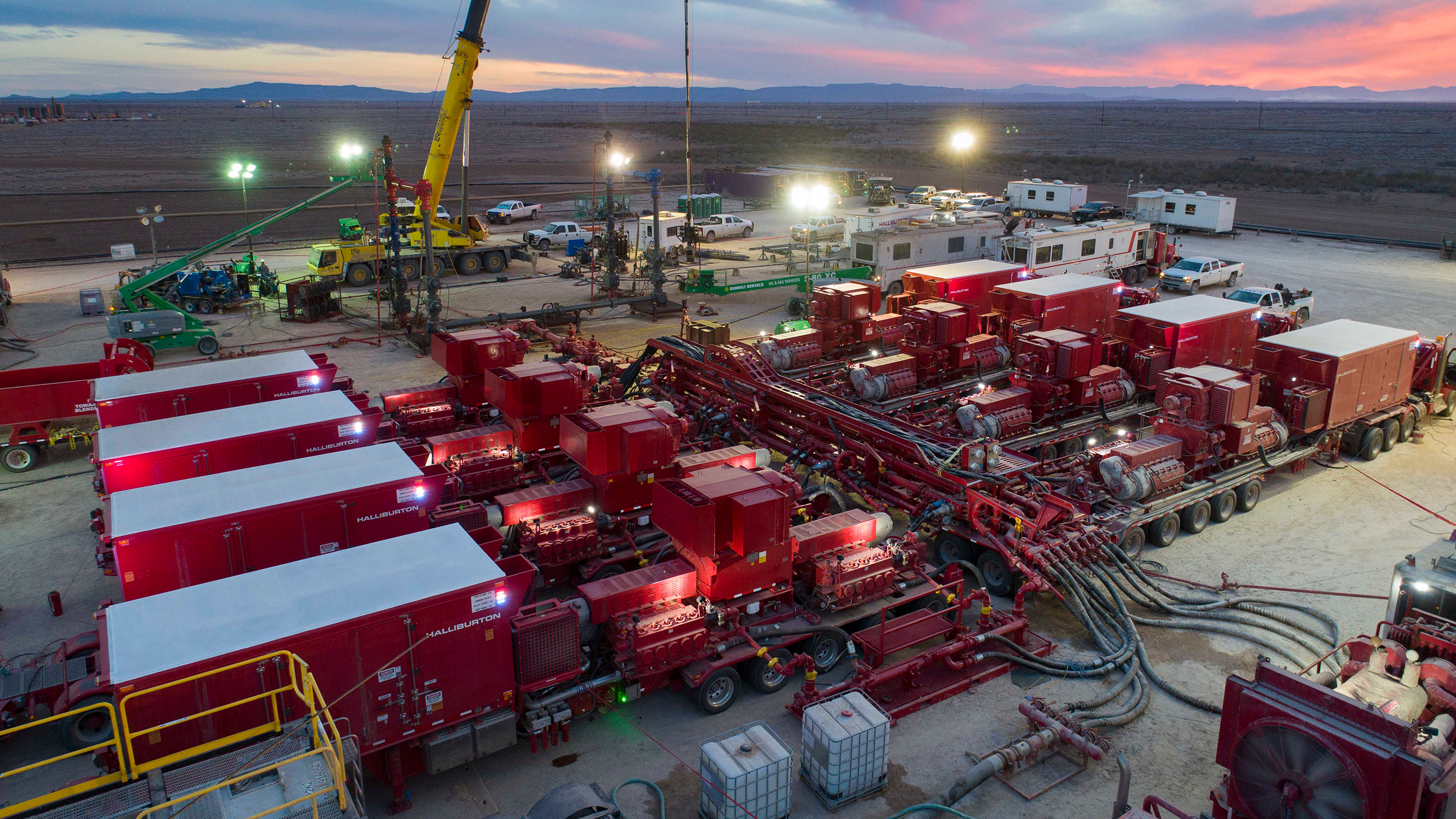
Hart Energy: What role do you believe e-fracs will play as more companies target lower emissions?
NOV: At NOV, we believe that the future of the frac industry won’t be dominated by one particular horsepower technology, but rather a mix of technologies based on certain regions and circumstances. We definitely feel e-frac will be one of those leading technologies and have invested in considerable R&D efforts to understand how to optimize the product for the application.
From an emissions standpoint, our industry is currently focused on a conversion from diesel energy to cleaner burning natural gas. Dual-fuel systems and direct drive turbine technologies capitalize on burning natural gas at a varying degree of emissions reduction based on their specific application. E-frac technology sets itself apart in the fact that its power generation requirement can come from a variety of different sources that can be customized to the application to optimize emissions reduction, whether it be in the form of a single turbine-powered generator, multiple turbine-powered generators, multiple natural gas recip generators or the premier of them all, highline power. I think this versatility means we haven’t yet realized just how far e-frac can go with regard to emissions reduction, which is exciting to think about. It certainly cements e-frac as the leading technology in this realm.
ProPetro: They will play a role, although limited until economics and infrastructure improve to enable deployment of more fleets like this.
Halliburton: E-frac is a premium offering that will play an increasingly important role as it’s the quickest way to reduce emissions on location and achieve higher performance. While we would like to see more companies move to a grid-powered solution or blended power, which we see as the future for our industry, there is no way to predict how quickly the market may shift to e-frac.
Hart Energy: The completions space is continually evolving in the oil industry. What trends have emerged in the last year or two, and how has your company adapted?
NOV: Big Data is a buzz phrase we’ve heard a lot in the past few years and rightly so—data will be a driving factor in our industry for years to come. We’ve all seen how the development of cloud computing and the ease of storage of terabytes have given us access to a wealth of data. But data isn’t knowledge, so our Intervention and Stimulation Equipment group formed an Advanced Analytics, Controls and Digital group to tackle the immense task of converting data into useful information for both OFS companies and E&Ps.
With the release of our GoConnect and Max Platform, we’re laying the groundwork for a progressive approach to converting data into value for our customers. We’re seeing some of our first green shoots now with algorithms that are capable of predicting a number of performance-related characteristics that address issues that have plagued the industry for years. As this digital learning continues, we will have unprecedented opportunities to refine and potentially revamp pressure pumping operations.
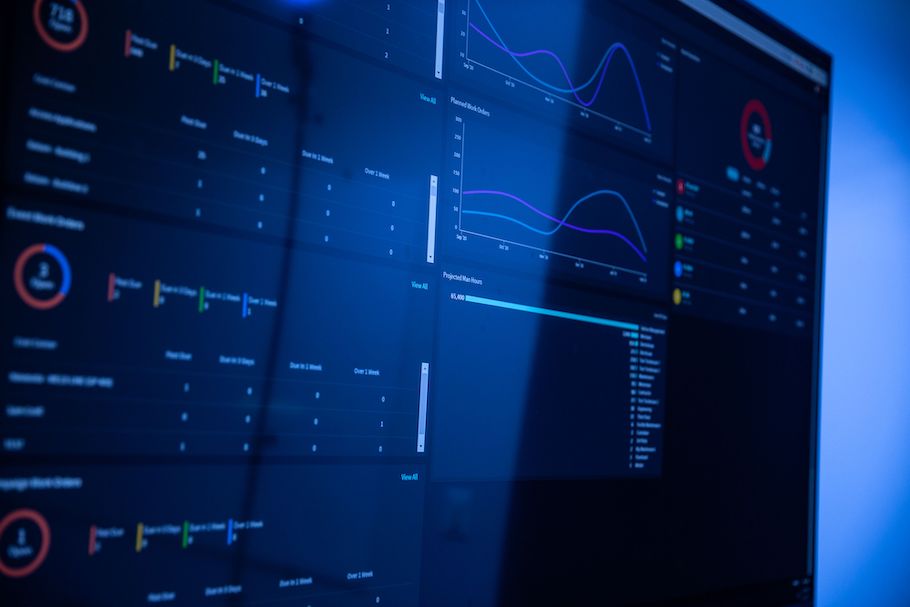
ProPetro: Simul-frac has driven incremental efficiencies with conventional equipment. We see this as an opportunity for large customers to leverage their scale with increasingly large projects. Dual-fuel equipment represents a stepping stone to achieve emissions reductions with equipment that is still similar to legacy solutions. Electric fleets are a middle- to long-term adaptation that will take some time to develop into a viable replacement for the equipment in use today.
Halliburton: Trends toward lower emissions and completion optimization have emerged. With capital efficiency and emissions top of mind for both service companies and operators, many oil and gas companies are looking to make the investment in electric.
Early this year, Halliburton successfully ran the first electric fracturing operation off grid power. This low-carbon approach to fracturing enables operators to reduce their diesel fuel cost to zero.
Although there has been an increased focus on efficiency over the last 10 years, many operators continue to struggle with fracture performance due to having limited visibility and control over how fractures interact with the rock. Operators want to know design effectiveness, prevent frac hits, increase stage lengths and achieve job consistency— all of which deliver better production at lower cost. Because of this, we are beginning to see an increase in the adoption of real-time measurements and fracture automation.
To help operators on their journey to real-time completion optimization, Halliburton introduced the SmartFleet intelligent fracturing system, which lets you see, measure and control how you land your fracs. To date, SmartFleet has helped operators improve cluster uniformity up to 30%, increase stage lengths and control frac hits. With this type of intelligent automation, operators have realized up to a 25% reduction in completion costs and ultimately an uplift in production up to 20%.
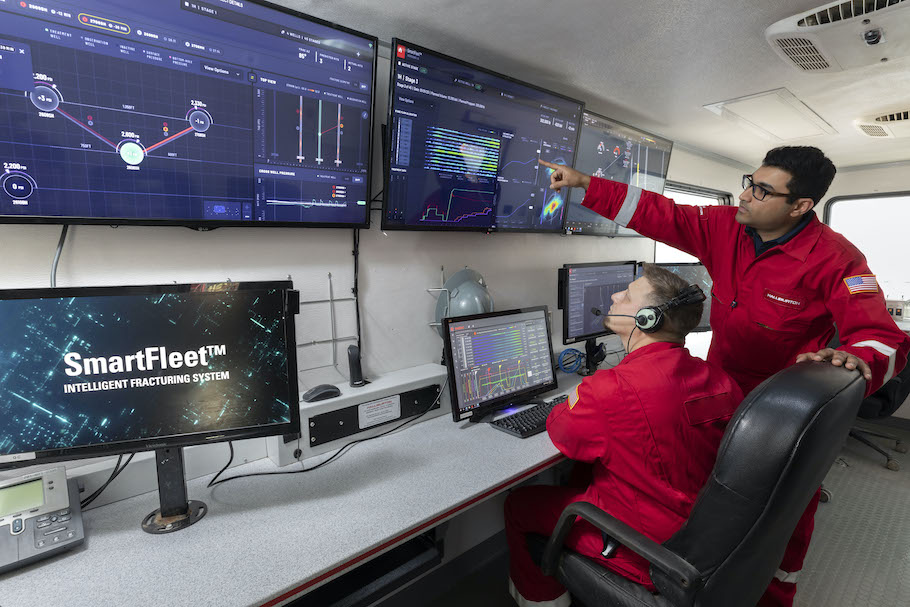
Hart Energy: What technologies do you see gaining traction in the coming months/years?
ProPetro: Simul-frac may gain traction with operators interested in maximizing completion efficiencies. The typical customer profile for simulfrac requires very large and sophisticated planning capabilities. Anything that will allow us to lower our emissions profile will gain traction because of the customer appetite for such improvements.
NOV: We’ve kept a watchful eye on simul-frac and the pace of adoption. With a constant drive by our industry to reduce the cost to first oil, we think simul-frac will see significant adoption over the next few years. It’s not without its cons; higher pumping rates mean more horsepower needed on location, which can press the limits of current pad sizes. Growing the size of the pad obviously means more costs, something that we’re all trying to cut out. Technologies like our Ideal eFrac System offering increased power density with 5,000-hp pump units and a dual blender design that feeds dual manifold systems—all of which compress the overall footprint of the spread—should be obvious choices as this technology continues to gain momentum.
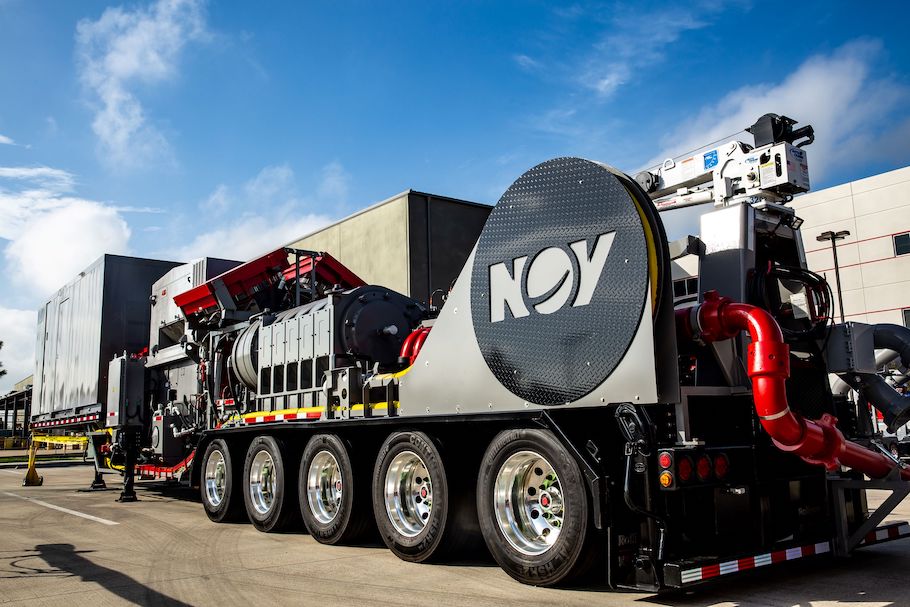
Halliburton: We believe the next frontier for stimulation is intelligent fracturing. Intelligent fracturing is the ability to connect real-time measurements, artificial intelligence and automation in a way that provides operators with newfound control that drives efficiency at the surface and optimization in the subsurface. Fracture automation is not new. What is new is the intelligence and measurements SmartFleet applies so that operators can make stage-level decisions to optimize their completions in real time.
We also realize a critical component to adopting intelligent fracturing at scale is having instant visibility and access to real-time subsurface measurements that are both actionable and affordable. Today, fiber-optic fracture monitoring provides valuable insights that help operators understand and validate fracture performance. However, for many operators, the historical cost and complexity of incorporating fiber at scale is simply not economically feasible. In an effort to provide low-cost, risk-free fiber solutions that operators can use routinely in every well, Halliburton has engineered out cost and complexity of fiber-optic fracture monitoring. ExpressFiber disposable fiber cable is the newest addition to our scalable fiber portfolio. It provides a direct measurement of well interference at a price point lower than tracers and complicated pressure analysis and is installed in offset wells in 45 minutes with zero impact to operations.
Hart Energy: What have you found that customers are willing to pay more for?
ProPetro: Not much at this point, although we believe next-generation equipment will eventually garner better economics and/or contractual terms. Today, the market is hyper competitive, and pressure pumping pricing still reflects that.
NOV: In the current market environment, we see OFS companies spending their dollars on reducing maintenance cost, improving efficiency and improving their ESG footprint. Of the three, ESG has the biggest impact on their checkbook as technologies that are focused on reducing emissions come at a premium to the basic equipment needed to complete a well. What’s interesting is that this premium hasn’t necessarily translated into a premium on the service contract with E&Ps. Certainly, it can be the tiebreaker in a decision to award a contract, or may even be a prerequisite, but until we see a balancing of the supply/demand relationship in the OFS side of the business, the premium value can only be measured in utilization.
Halliburton: Today there are premium ESG technologies that the market is willing to pay for. Although it may not be in every operator’s fracturing arsenal today, those who are pioneering a more intelligent way of fracturing appear willing to pay for the intelligent automation and real-time measurements that get them there.
Hart Energy: Where are your technology innovation efforts focused? Are operators seeking any particular solutions that pressure pumpers in general haven’t been able to meet yet?
ProPetro: Lowering emissions, increasing efficiency and lowering costs. Both pressure pumpers and E&P customers are interested in leveraging next-generation technology; however, we haven’t seen the broad adoption that might be expected. Implementing this next-generation technology to reduce emissions requires significant coordination and commitment between service provider and customer, which has governed the pace of adoption up to this point.
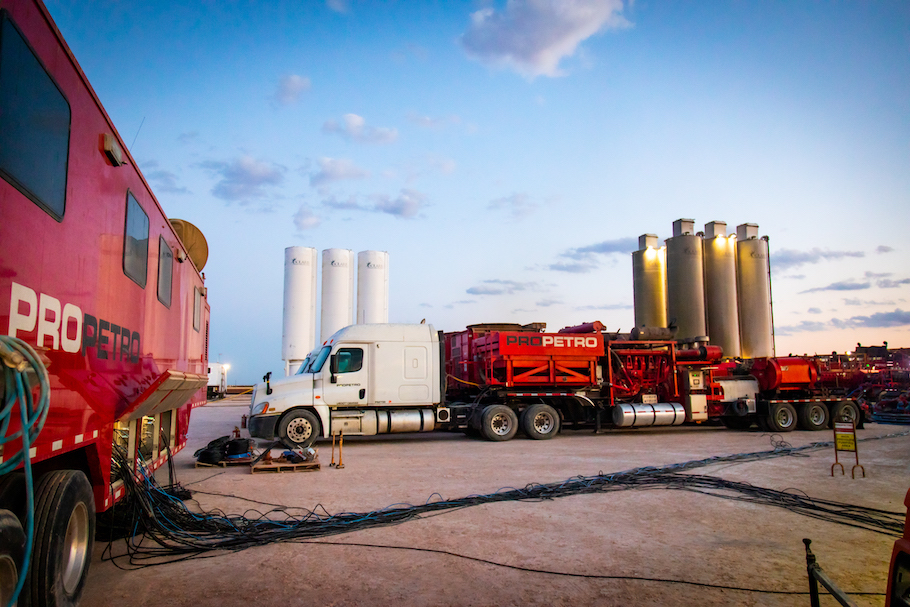
NOV: NOV is focused on the process of fracturing as a whole, not just considering the incremental changes but also the step changes. Understanding the perception of value has shifted from not just the monetary cost of creation of a well, but to include how the wells are created. This means leveraging innovative and technical solutions that may look different than the frac operations of the past.
In terms of goals for operators, we are seeing a continued push toward automation and standardization. Due to the wide variability in well completions and the human factor, E&Ps are seeking tools to help allow them to drive down cost and increase production. This is a challenge in a highly evolving market. Automation is continually discussed as a destination technology for the frac industry.
Halliburton: Delivering high-performing, electric fracturing solutions is a key focus area for our technology roadmap, as is intelligent fracturing. Operators are seeking the technology and insights to produce more with less, but automation alone isn’t the answer. Having real-time measurements and intelligent systems that automatically respond to them is how the industry will reach that next level of optimization and efficiency.
The SmartFleet intelligent fracturing system is more than just pump automation. It’s where automation and completion optimization converge— allowing operators to see and control fracture placement and stage lengths, while controlling costs and improving production. It may be new territory today, but just as subsurface measurements revolutionized directional drilling and real-time decision-making, intelligent fracturing will do the same for shale completions.
Hart Energy: What opportunities do you see for growth in the pressure pumping market?
ProPetro: Next-generation equipment, but we hesitate to define that as growth as it will happen in tandem with significant attrition. We see growth as increased ability to meet customer needs through our historically high level of execution and service quality, but not necessarily incremental scale or product lines. Although our team is continually vetting various opportunities to drive value creation.
NOV: From an OEM standpoint, our opportunity to grow in the current pressure pumping market is dependent upon our ability to innovate and bring new products and technologies to the market in an expedient manner. Pressure pumping is not expected to have a meteoric rise in demand over the next few years, but we have seen how quickly technologies can take hold and displace existing technologies under the right conditions. We need to continue to listen to our customers and our customer’s customers in order to identify where we can make a difference in the food chain by using our extensive knowledge and resources to disrupt the status quo. I think the market we see in five years will have a much different look than what we see today.
RELATED CONTENT:
Aug. 2, 2021 Shale Producers Talk Development Plans, ESG and Completion Designs
July 29, 2021 Cold Bore Technology Closes $14 Million Financing
July 28, 2021 Halliburton Launches Low Cost, Direct Fracture Monitoring Service
July 28, 2021 ProPetro Promotes Sam Sledge to CEO in Leadership Transition
JUly 12, 2021 Seneca Resources, NexTier to Develop Comprehensive Emissions Testing for Well Completions Work
July 7, 2021 Liberty Completes digiFrac Electric Frac Pump Field Test in Permian Basin
July 6, 2021 Reveal Energy Inks Deal to Commercialize Hydraulic Fracture Pressure Diagnostics
June 21, 2021 Specialized Chemistry Increases Sustainability of Traditional Hydraulic Fracturing
Recommended Reading
Chevron Adds to Carbon Capture Tech Portfolio with ION Investment
2024-04-04 - Chevron New Energies led a funding round that raised $45 million in Series A financing for ION Clean Energy, according to a news release.
Bobby Tudor on Capital Access and Oil, Gas Participation in the Energy Transition
2024-04-05 - Bobby Tudor, the founder and CEO of Artemis Energy Partners, says while public companies are generating cash, private equity firms in the upstream business are facing more difficulties raising new funds, in this Hart Energy Exclusive interview.
Some Payne, But Mostly Gain for H&P in Q4 2023
2024-01-31 - Helmerich & Payne’s revenue grew internationally and in North America but declined in the Gulf of Mexico compared to the previous quarter.
Shell’s CEO Sawan Says Confidence in US LNG is Slipping
2024-02-05 - Issues related to Venture Global LNG’s contract commitments and U.S. President Joe Biden’s recent decision to pause approvals of new U.S. liquefaction plants have raised questions about the reliability of the American LNG sector, according to Shell CEO Wael Sawan.
Green Swan Seeks US Financing for Global Decarbonization Projects
2024-02-21 - Green Swan, an investment platform seeking to provide capital to countries signed on to the Paris Agreement, is courting U.S. investors to fund decarbonization projects in countries including Iran and Venezuela, its executives told Hart Energy.


